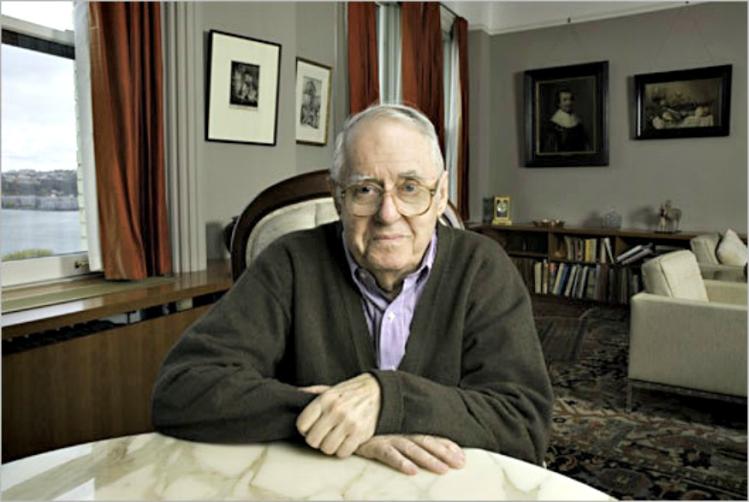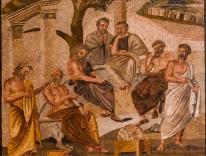
Peter Gay’s list of published works covers pages. A professor of history at Yale, he was a scholar of the Enlightenment, a historian of “The Bourgeois Experience” of the nineteenth century, and an expert on Freud—yet, as he put it in the introduction to his final book (he died in May), he had never before written directly on romanticism. This short work, part of a Yale series titled “Why X Matters,” offers Gay’s mature thoughts on a notoriously challenging topic.
To those of us who identify romanticism with Wordsworth, Coleridge, Keats, and Shelley, this book is all the more interesting for taking us into unusual terrain, with examples drawn mainly from German and French literature, music, and art. Where historical scope is concerned, Gay suggests that Romantics matter because they are still very much with us, though their presence is largely unrecognized by today’s artists. As a social historian he sets out to trace the pattern of acceptance of avant-garde art that led “radicals to become rentiers,” and the social factors that turned “Middlemen into Pedagogues,” as one chapter title has it. He is at pains to indicate the adversarial stance of so much that was perceived as “modern” and to show how, in response, museum curators and gallery owners educated consumers of art to appreciate works that might be said to attack their social attitudes.
This is a slender volume, but its aims are large. “No attempt has ever been made to map all the manifestation of modernity as part of a single historical epoch,” Gay writes; “this book is an essay in generalization, without slighting, let alone ignoring, the individuality of each domain.” The broad statements ventured in these pages expand Romanticism to include more than two hundred years—from the late eighteenth century to the present—while differentiating the “domains” of literature, art, and music. All this in 133 pages.
***
Gay’s chapter titles outline the argument: “Re-enchantment of Nature,” “Romantic Psychology,” the “Middlemen as Pedagogues,” “Art for Artists’ Sake,” and “The Beethoven Decades.” We move from the familiar notion of the Romantic rebellion against Enlightenment rationality, to the focus on artistic self-expression and the artist’s unique consciousness in music, paint, or words, and finally to the social mediation of the works produced. How did what was always new and challenging become assimilated by the very strata of society that it intended to subvert? Beethoven appears as the towering Romantic genius, the apotheosis of artistic dedication and achievement, a man “fully aware that his world of music, specifically his compositions, went far beyond his age”; a man, in Gay’s estimation, who knew “he was writing for all ages.”
The first section of Why the Romantics Matter, which looks carefully at Novalis and Schlegel, refreshes the old truisms about romantic rebellion. Gay possesses the depth of reading to choose apt examples and arresting quotations—quoting Novalis, to take one example, complaining about how the Enlightenment “disfigured the infinite creative music of the universe into the monotonous clatter of a gigantic mill.” In considering the revolt of young artists against their conventional forebears, Gay explores the relevance of Freud and the Oedipus complex, but cautions against too simplistic an application of Freud’s insight. Throughout the book Gay warns that any reductionist argument, or too strenuous an emphasis on one analytical strain, will inevitably distort the manifold representations of romanticism. Such caution arises from the wisdom of age and broad scholarship, and signals a judiciousness that keeps the author from ever allowing his own thesis to distort the evidence.
Though Gay never explicitly argues for expanding the term Romantics to Moderns, he comes close when he remarks that “all Moderns had in common...the conviction that the untried is markedly superior to the familiar, the rare to the ordinary, the experimental to the routine.” Make it new; challenge convention in art and society; fall back on one’s own consciousness; prefer the interior vision to the objective reality of the external world. These characteristics are present throughout the two-hundred-year period, forming “a single aesthetic mindset,” Gay writes, “a recognizable style—the modern style—which is a climate of thought and opinion.”
The book’s final section, though titled “Epilogue,” offers more than concluding remarks, forming in fact a reflection on the Romantics as a whole. Here Gay’s wide reading and knowledge of European culture allow him to look at nonrepresentational art from the perspective of Kandinsky and Malevich, and at the self-portraiture of Cézanne and Max Beckman, drawing from their published commentaries the consistent themes that he has been tracing through the earlier chapters. The last chapter mirrors the way this book proceeds overall, not so much by digression as by apposition, summoning a plethora of examples that allows a reader time to linger over its thesis. When I reached the end of Why the Romantics Matter, I really did not have a sense that it was finished. Rather I felt that, had he wished, Gay could have continued, addressing other representative authors, canvases, or musical works. But a book has to end somewhere, as does a life.
Please email comments to [email protected] and join the conversation on our Facebook page.
Share
Previous Story
Last Word: Flick, Flick
Next Story
'One Moment of Reality'

